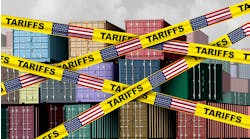There Are Better Ways to Build a Domestic PPE Supply Chain
IndustryWeek's elite panel of regular contributors.
Learning from shortages during the COVID-19 pandemic, the United States must develop resilient and financially viable domestic supply chains proactively for personal and protective equipment (PPE) before the next pandemic.
The World Health Organization (WHO) stated that COVID-19’s global health emergency status could end in 2023. However, scientists are worrying that the next pandemic will arrive soon. Emerging viruses such as H5N1 avian flu and Ebola are spreading to humans from animals and insects.
It is time to ensure America is better prepared for the next pandemic.
Currently, major American firms such as 3M, Honeywell and Prestige Ameritech have several manufacturing facilities in the United States that can produce N95 respirators, surgical masks and other types of PPE. However, because the demand for PPE is stable in normal times, these firms do not have excess “just in case” capacity to cope with surging demand during rare emergencies. Because of obsolescence, it is too costly for the government to store a high amount of PPE inventory in the Strategic National Stockpile.
Relying on smaller domestic firms that entered the market during the pandemic to fill the gap has not been sustainable financially.
Consider the ill-fated domestic face-mask production investments in 2020 when there were severe shortages of N95 masks and other PPE. When the number of Covid-19 cases peaked in January 2021, the orders for U.S. mask manufacturers went through the roof. But after China began exporting more low-cost PPE to the U.S. in December 2020, the orders for American-made masks vanished.
By September 2021, the American Mask Manufacturer’s Association estimates that up to 10 out of 29 domestic mask manufacturers had stopped production and several manufacturers were going bankrupt.
To better prepare for the next pandemic, the U.S. government must work with private firms and universities to develop resilient and financially viable PPE supply chains to protect the public and healthcare workers. I propose two suggestions.
Reserve Production Capacity
First, in addition to amassing PPE in the national stockpile, the government can establish options contracts with the right incentive to entice domestic firms to build extra capacity for emergency use. For instance, instead of committing to certain order quantities that may not be needed, the government could reserve certain production capacity from a firm with an upfront payment to defray the costs associated with extra capacity and keeping an inventory of materials such as melt-blown nonwoven fabric and elastic straps. When demand surges during a pandemic, the government can exercise their reservation option by asking the firm to produce up to the reserved quantity with additional cost.
This form of reservation contracts, used in the semiconductor industry, can be a cost-effective mechanism to meet uncertain demand. By reserving extra domestic capacity in advance, this incentive contract can offer the right amount of flexibility to cope with unpredictable demand surges without having the government hold a lot of perishable inventory.
Because domestic manufacturers can work with the government to monitor real demand up close, this flexibility can enable them to gain a competitive advantage over foreign suppliers by responding to changing needs quickly and accurately.
Encourage Innovation
Second, due to higher production cost in the U.S., having domestic firms produce standard masks and other PPE is not financially viable. Government subsidies can help, but they are not sustainable in the long term. Also, requiring federal or state hospitals to procure American-made masks at high prices is not viable especially when most of these hospitals are financially strapped.
However, there is an opportunity for the U.S. to develop innovative masks and PPE so that it is possible for domestic makers to develop a sustainable business model.
Currently, the National Institute for Occupational Safety and Health (NIOSH) adopted the standards for surgical and N95 masks established by ASTM International. For surgical masks, these standards focus on filtration efficiency, inhalation/exhalation resistance (breathability), fluid resistance, and fit testing. However, these standards were established for single-use masks made of non-recyclable materials, creating an environmental crisis during the COVID-19 pandemic.
One can turn this crisis into a new opportunity by having NIOSH impose reusable, recyclable, sizable standards for surgical and N95 masks. These additional standards can stimulate research and development in the United States to create reusable masks that can both filter and destroy bacteria and viruses using positively charged copper-infused filters to trap and immobilize bacteria and most viruses and chemically treated and recyclable fabrics to deactivate a broad range of viruses. Also, there is a need to develop different sizes of masks to provide better fitting when Americans have different face size and facial curvature.
Imposing reusability and recyclability standards on these specialized masks in the United States can create entry barriers. Also, it can help American made masks more competitive because they are more environmentally sustainable and may be even cheaper on a cost-per-use basis.
These two suggestions require cooperation among the government, the private sector and research institutions, which can be challenging. However, because the goal is to build resilient domestic PPE supply chains that can improve public health safety and create financially viable new ventures in the United States, it is time for different parties to come to the table to work together before the next pandemic.
Christopher Tang is a distinguished professor at the UCLA Anderson School of Management.





